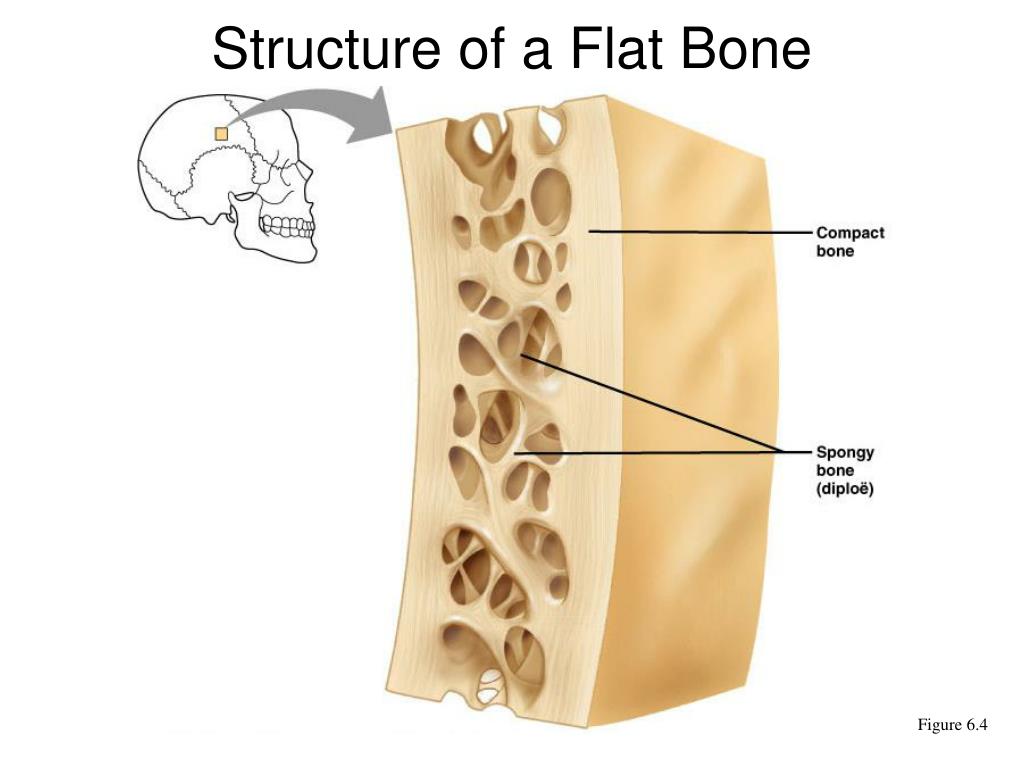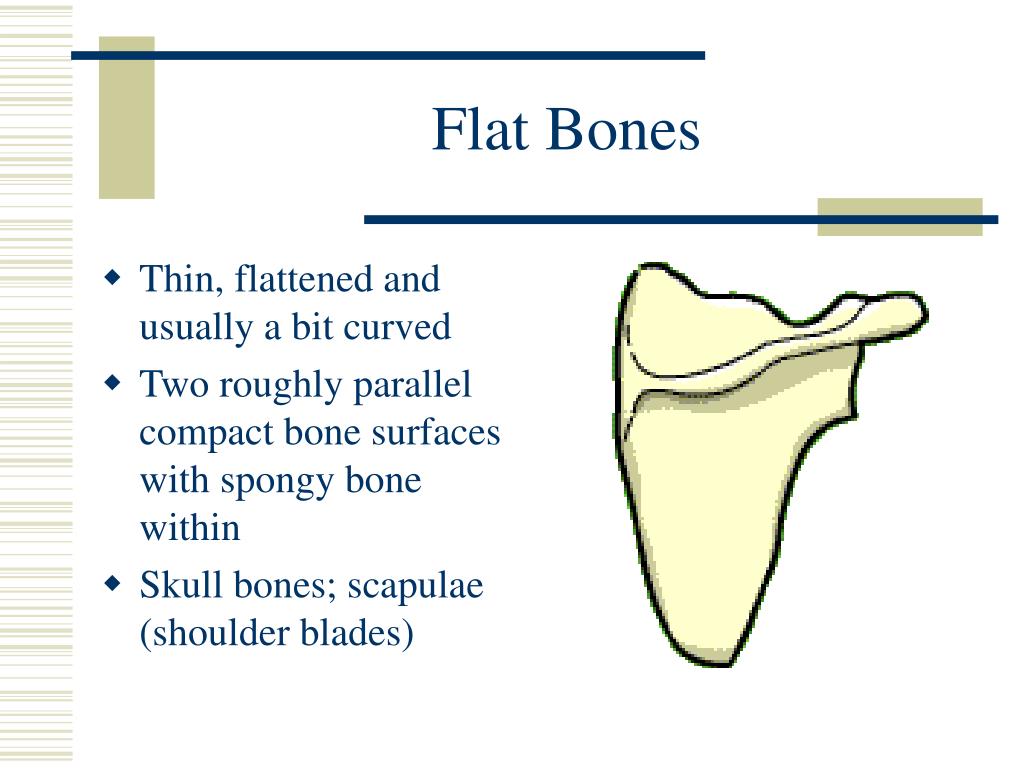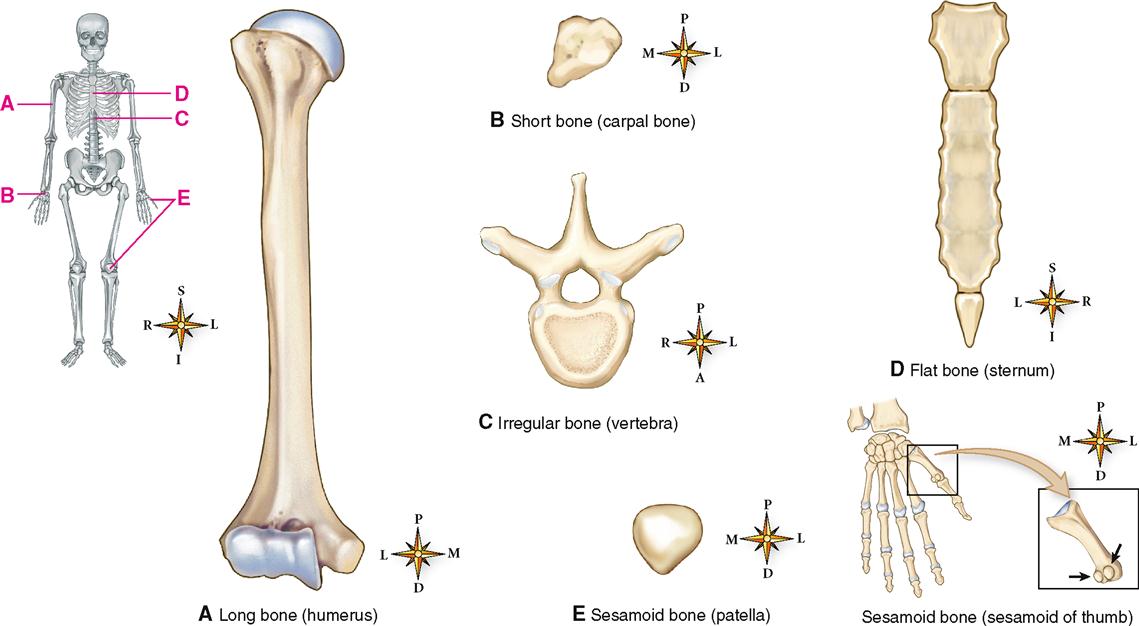

This protects it and aids shock absorptions. Hyaline cartilage covers the ends of the bone. The classification of a long bone includes having a body that is longer than it is wide, with growth plates (epiphysis) at either end, having a hard outer surface of a compact bone, and a spongy inner known as a cancellous bone containing bone marrow. Sesamoid bones develop inside tendons and may be found near joints at the knees, hands, and feet (see Figure 3).Long bones are some of the longest bones in the body, such as the Femur, Humerus, and Tibia but are also some of the smallest including the Metacarpals, Metatarsals, and Phalanges. Sesamoid bones are small, flat bones and are shaped similarly to a sesame seed. Examples of irregular bones are the vertebrae, hip bones, and several skull bones. These bones may have short, flat, notched, or ridged surfaces. Irregular bones are bones with complex shapes.

Examples of flat bones are the sternum (breast bone), ribs, scapulae (shoulder blades), and the roof of the skull (Figure 1). For example, the bones of the wrist (carpals) and ankle (tarsals) are short bones (Figure 1).įlat bones are thin and relatively broad bones that are found where extensive protection of organs is required or where broad surfaces of muscle attachment are required. Short bones, or cuboidal bones, are bones that are the same width and length, giving them a cube-like shape. Exceptions to this include the patella and the bones of the wrist and ankle. Most of the limb bones are long bones-for example, the femur, tibia, ulna, and radius. The rounded ends, the epiphyses, are covered with articular cartilage and are filled with red bone marrow, which produces blood cells (Figure 2).

The diaphysis, or central shaft, contains bone marrow in a marrow cavity. Long bones are longer than they are wide and have a shaft and two ends. Figure 2. The long bone is covered by articular cartilage at either end and contains bone marrow (shown in yellow in this illustration) in the marrow cavity.


 0 kommentar(er)
0 kommentar(er)
